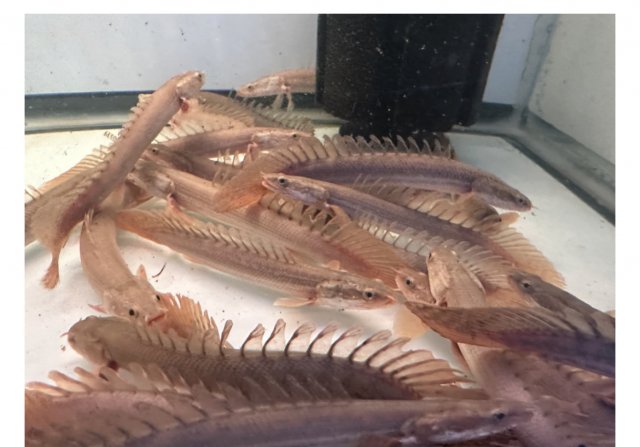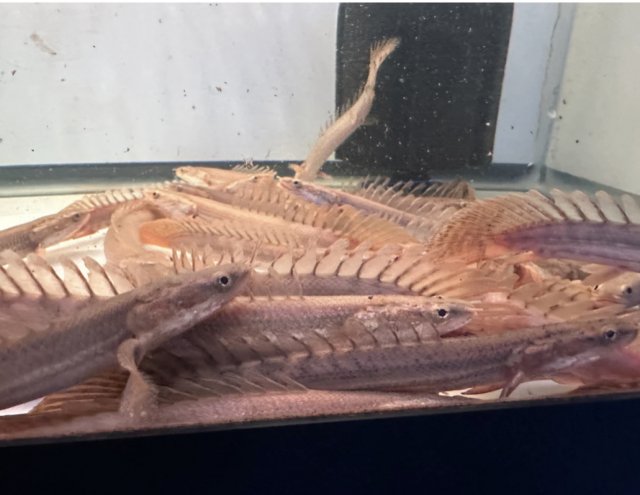Bichir ID?
- Thread starter rayoddballfish
- Start date
-
- Tags
- bichir bichir id pbb polypterus
See what hao thinks but I’m only counting 14 finlets so I think they are laps.
Thanks for the reply. I was thinking the same thing. Plus the head shape and colors scream lap to me, but I kinda hope I’m wrong since would love a true PBB in my collection.See what hao thinks but I’m only counting 14 finlets so I think they are laps.
Any pics what they will look like as adults? Also how can you tell?They are definitely captive bred PBB.
In my opinion, most of them do not look very nice when bigger. Especially these ones since they are Indonesian bred. Looks very different from their wild counterpart (thus price difference). Unfortunately, I do not have any pictures. I rarely see them grown big too. I've never been great at explaining the fine details when it comes to IDing bichirs. But I looked at their headshape and pattern (some of them in the video that Monster Aquarium posted showed clear pattern similar to their wild counterpart.) I didn't need to count finlet but there should be about 16 finlets on them (not the most reliable method but it can be helpful).Any pics what they will look like as adults? Also how can you tell?
Gotcha. Thank you for the reply. Makes sense. For that price as well I agree they are prob not the best quality given what I’ve seen PBBs going for. Ended up getting another lap which I’m assuming is a nigerian wild caught lapIn my opinion, most of them do not look very nice when bigger. Especially these ones since they are Indonesian bred. Looks very different from their wild counterpart (thus price difference). Unfortunately, I do not have any pictures. I rarely see them grown big too. I've never been great at explaining the fine details when it comes to IDing bichirs. But I looked at their headshape and pattern (some of them in the video that Monster Aquarium posted showed clear pattern similar to their wild counterpart.) I didn't need to count finlet but there should be about 16 finlets on them (not the most reliable method but it can be helpful).
I would say it's CB PBB tooThey are definitely captive bred PBB.
Hao is a legend. What characteristics allowed you to deduce they were bred in Indonesia?In my opinion, most of them do not look very nice when bigger. Especially these ones since they are Indonesian bred. Looks very different from their wild counterpart (thus price difference). Unfortunately, I do not have any pictures. I rarely see them grown big too. I've never been great at explaining the fine details when it comes to IDing bichirs. But I looked at their headshape and pattern (some of them in the video that Monster Aquarium posted showed clear pattern similar to their wild counterpart.) I didn't need to count finlet but there should be about 16 finlets on them (not the most reliable method but it can be helpful).










